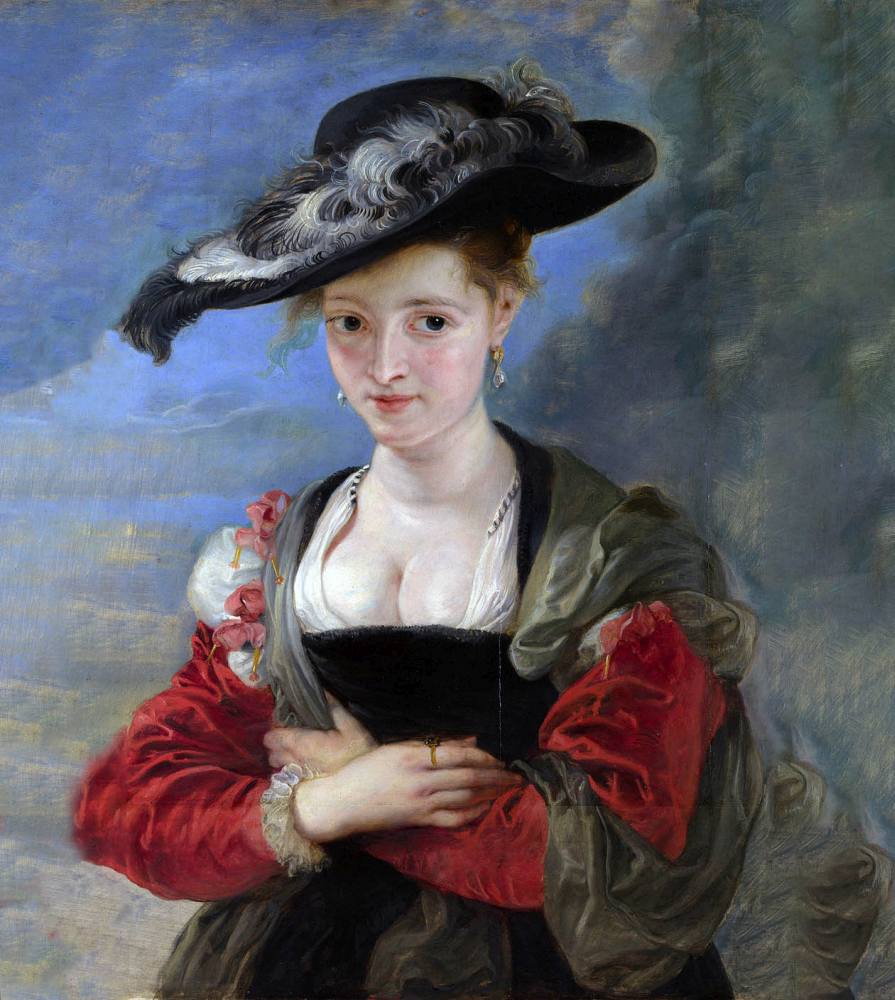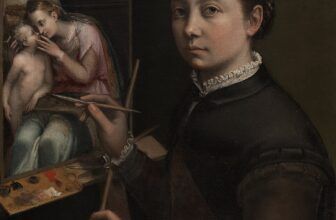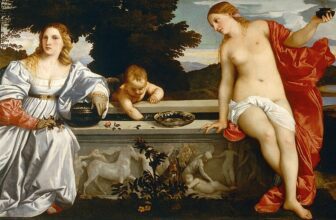
Peter Paul Rubens Paintings of Susanna Fourment
In the pantheon of Baroque art, few names shine as brightly as Peter Paul Rubens. A master of dynamism, sensuality, and classical grandeur, Rubens’ work spans religious epics, mythological tableaux, and majestic portraits. Among his many muses, Susanna Fourment, the sister-in-law of Rubens’ first wife, holds a place of distinction. Rendered with striking sensuality, elegance, and emotional depth, Susanna became both a subject and symbol in several of Rubens’ masterpieces.
This article explores the life behind the canvas, the artistic mastery with which Rubens portrayed Susanna Fourment, and the meaning and symbolism embedded in these works.
Who Was Susanna Fourment?
Susanna Fourment was born into a prominent Antwerp family in the late 16th century. Her sister, Isabella Brant, married Rubens in 1609, making Susanna Rubens’ sister-in-law. While her life was largely private and domestic by the standards of the era, she would go on to become immortalized in some of Rubens’ most celebrated and intimate paintings.
Susanna was known for her beauty, grace, and refined demeanor, and Rubens captured her likeness in a series of portraits and allegorical scenes. She later married Arnold Lunden, a silk and tapestry merchant, which led to one of Rubens’ most famous paintings: “Le Chapeau de Paille” (“The Straw Hat”).
The Famous Depiction: Le Chapeau de Paille
Title:
Le Chapeau de Paille (“The Straw Hat”)
Artist:
Peter Paul Rubens
Year:
circa 1622–1625
Medium:
Oil on panel
Dimensions:
79 x 55 cm
Location:
The National Gallery, London
While several paintings may feature or be inspired by Susanna Fourment, “Le Chapeau de Paille” is the most iconic. It showcases a young woman in a wide-brimmed straw hat with an open bodice, looking over her shoulder at the viewer. Though often translated as “The Straw Hat,” it is important to note that the hat depicted is not actually straw , the title is a romantic misnomer possibly adopted after the fact due to the perceived rustic charm of the headwear.
Identification of the Subject
It has long been debated whether the woman in this portrait is Susanna Fourment. Art historical consensus, supported by family resemblance and documentation, identifies her as such. The painting does not bear her name explicitly, but Rubens’ personal connection to her, the intimacy of the rendering, and the existence of similar portraits of her sisters support the attribution.
What is Happening in Portrait of Susanna Lunden?
In this portrait, Susanna is shown three-quarter length, turned slightly with her head looking over her shoulder, her eyes meeting the viewer. She wears a dramatic, feathered hat and a low-cut black velvet dress, her skin glowing in the warm, directional light. A subtle, mysterious smile plays across her lips, suggesting inner life and intelligence.
The painting is neither narrative nor symbolic in a traditional sense , it is a celebration of beauty, presence, and sensuality. There’s no backdrop or story being told in a conventional fashion. The moment is one of quiet dynamism, created through pose, gaze, and painterly contrast. It is about how she exists, not what she is doing.
Symbolism and Meaning
Though “Le Chapeau de Paille” does not depict a mythological or biblical story, it is loaded with symbolic and stylistic elements reflective of Rubens’ artistic philosophy and the Baroque spirit.
1. The Hat and Fashion Symbolism
The wide-brimmed hat, though not literally straw, serves as a fashion statement of the time, denoting refinement, worldly awareness, and elegance. Hats were also worn as indicators of status, taste, and sometimes even flirtation.
2. Open Bodice and Sensuality
Rubens was famous , and sometimes criticized , for his depictions of voluptuous female figures. Susanna’s open bodice and glowing flesh reflect his characteristic sensuality, but also convey ideas of feminine power, natural beauty, and sexual vitality.
In Baroque art, nudity or partial undress was not merely erotic; it often conveyed allegorical meanings , truth, purity, or even vulnerability. Here, the subtle sensuality implies a woman aware of her effect but poised and dignified.
3. Light and Flesh
Rubens uses light to caress Susanna’s skin, enhancing the tactile and emotional realism. Her face, shoulder, and chest emerge from a dark background in a chiaroscuro effect that places her in a luminous presence. This is not merely optical brilliance , it suggests an inner light, a soulfulness rendered visible.
4. Gaze and Identity
Perhaps the most arresting element is her gaze , confident, calm, and slightly enigmatic. Unlike the submissive stares often seen in earlier Renaissance portraits, Susanna’s gaze is direct and intelligent. She is not an object but a subject , a woman who looks back.
Rubens’ Technique and Baroque Sensibilities
Rubens painted in oil with exceptional fluency, layering colors to produce radiant, lifelike textures. His brushwork in Le Chapeau de Paille demonstrates both precision and spontaneity , especially in the hat’s feathers and the shimmering light on skin.
This painting embodies Baroque art’s hallmarks:
Dramatic lighting
Movement through pose
Emotional resonance
Lush naturalism
But it also diverges from more grandiose Baroque works by focusing on intimate human presence rather than theatrical spectacle.
Comparison to Other Fourment Portraits
Rubens also painted Helena Fourment, Susanna’s younger sister, who became his second wife after Isabella’s death. Helena appears in some of Rubens’ most sensuous and mythologized paintings, such as The Garden of Love and Helena Fourment in a Fur Wrap.
While Helena was more frequently eroticized and mythologized, Susanna is rendered with aristocratic restraint and self-possession. Her portraits are intimate but never overtly symbolic of mythological roles. This distinction may reflect the different personal and symbolic roles each woman played in Rubens’ life and artistic imagination.
Creation of the Painting
Rubens painted Le Chapeau de Paille between 1622 and 1625, at the height of his career. By this time, he was not only a master artist but also a diplomat and a court painter to monarchs across Europe.
His portrayal of Susanna likely began as a personal commission or family piece, not a public statement. This allowed him to work with a greater sense of freedom and intimacy. The result is a portrait that feels emotionally close, devoid of grand ideological statements yet rich in human character.
Where is the Portrait of Susanna Lunden Painting Today?
“Le Chapeau de Paille” is housed in the National Gallery in London, where it remains one of the museum’s prized Baroque portraits. The gallery acquired it in 1871, and since then, it has been admired for both its technical brilliance and the charisma of its sitter.
Other Rubens portraits thought to depict Susanna Fourment (or inspired by her features) may reside in private collections or major European institutions, but none have achieved the iconic status of this particular painting.
Interpretations: Feminine Power, Intimacy, and Musehood
Susanna Fourment, in Rubens’ rendering, is more than a sitter , she is a muse, but not one shrouded in myth or allegory. She is celebrated as herself, with her personality, her sensuality, and her elegance. In a time when women were often idealized or relegated to symbolic roles, Susanna’s portrait breaks with tradition by allowing her a subtle subjecthood.
Her depiction stands as an emblem of:
Feminine autonomy
Emotional presence
Unfiltered beauty
Baroque sensuality balanced with decorum
Le Chapeau de Paille has influenced generations of artists, especially in how portraiture can balance allure with dignity. In the 19th century, Édouard Manet and others in the Realist and Impressionist movements admired Rubens’ naturalism and sensual modeling of the figure. Even today, the painting remains a staple in studies of Baroque portraiture and feminine representation in art history.
Rubens’ treatment of women , especially family members like Susanna , shaped a nuanced model of feminine poise, intellect, and physical presence, which echoed through centuries of European art.
Peter Paul Rubens’ portraits of Susanna Fourment, particularly “Le Chapeau de Paille”, are masterworks of Baroque portraiture , not only for their technical brilliance but for their psychological and emotional depth. They stand as elegant testimonies to Susanna’s beauty and character and Rubens’ genius in rendering the human soul through oil and light.
Far more than a beautiful face in a hat, Susanna Fourment is a window into Rubens’ intimate world: a world where art, family, and femininity intertwine in the soft gleam of flesh, the mystery of a gaze, and the timeless dialogue between artist and muse.




